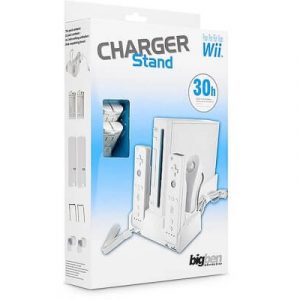
The holder of a model registration may file an objection against third parties that use its model (a product design, for example) without its permission. The term ‘use’ is also understood to mean the depiction of that model. However, the European Court of Justice has made it clear to model holder Nintendo that there are limits to those rights.
Nintendo versus BigBen
Nintendo lodged an objection against BigBen, a company that develops and sells accessories for the well-known Nintendo games console, the Wii. BigBen displayed its Wii accessories on its website to promote the sale of its products. The Wii games console is a product whose design is protected within the EU as a model.
What was the objection?
Nintendo was unhappy with this method of advertising – the use of images of the Wii console for the purpose of selling another party’s accessories. The reasoning behind this was that the consumer might be a little too easily tempted to purchase the cheaper accessories of BigBen.
And what was the Court’s opinion?
Nintendo initiated legal proceedings, and the case was ultimately brought before the Court of Justice, which was asked to deliver a judgment on the use of images of protected models in the marketing of third-party products. The outcome was clear: in principle, the holder of a model must tolerate the depiction of its protected model by third parties for the purpose of ‘making citations’ in commercial communications.
But this is only permitted under certain conditions
There are, however, three conditions attached to such use:
1. The party depicting the model must do so in accordance with ‘fair trade practice’. This condition applies as an obligation of loyalty towards the model holder, and does not mean that the advertiser is permitted to create the impression that a commercial relationship exists between it and the model holder. Although this still sounds vague, this certainly covers a situation in which the advertiser depicts the protected models in an unnecessarily prominent way, thereby giving the impression of being an official or even exclusive dealer.
2. The image must not prejudice the exploitation of the protected model. What this boils down to is that the depiction of the model by third parties must not have any negative impact on the model holder’s commercial interests. This might include, for example, the depiction of the model within a (highly) critical context or ‘bargain basement’ shop.
3. The source of the model must be mentioned. This may take several forms, such as by referring to the mark under which the model is known, or by stating the name of the model holder, as long as the average consumer understands from whom the protected model originated.
A disappointment for Nintendo?
In each case, it is down to the court to judge whether these three conditions have been fulfilled. It is therefore not possible to make a general statement as to whether an advertiser is acting lawfully. This is a bitter pill for Nintendo to swallow, because third parties are permitted in principle to use images of protected Nintendo models in their advertising, and this intensifies mutual competition even further.

